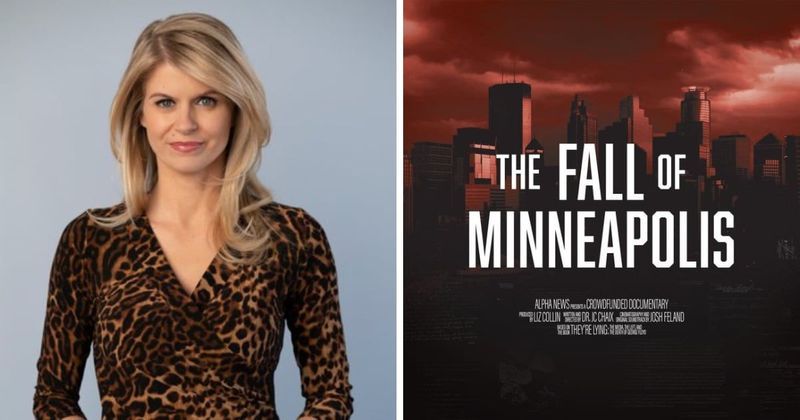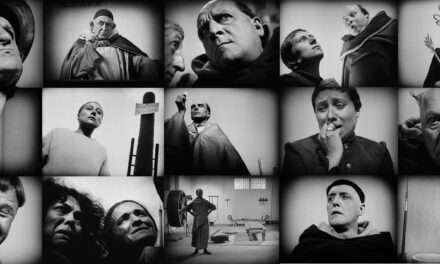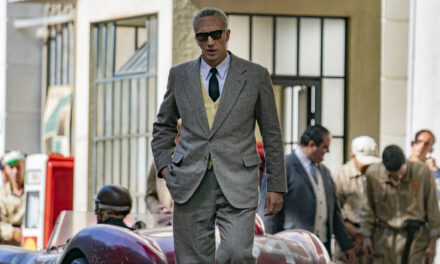If you want to recall the details of George Floyd’s death, you’ll probably do as I did and go to your favorite browser, type in Floyd’s name, and wait for the Internet to do its magic. For me, the first item to pop up was a Wikipedia entry under the title “Murder of George Floyd.” The event, which seems like yesterday, occurred on May 25, 2020, and Wikipedia says, citing the Guardian, that Floyd “a 46-year-old black American man, was murdered in Minneapolis by Derek Chauvin, a 44-year-old white police officer.” That’s no more than the Hennepin County District Court, Judge John Cahill presiding, finally ruled, but the question remains, was the verdict fair?
A new documentary from Alpha News (currently available on YouTube) entitled The Fall of Minneapolis examines the Floyd’s notorious death in real-time detail; it includes interviews of police officers from Minneapolis’ third precinct and shows footage of the horrific riots that shook the city. The events are hardly news to those with any memory of that late spring although seeing what happened can be disturbing, even chilling. But the argument of the documentary is clear enough: through manipulation of evidence by Judge Cahill and Minnesota Attorney General Keith Ellison, along with the court’s refusal to grant a change of venue in a clearly politically- charged atmosphere, officers Alex Kueng, Thomas Lane, Tao Thao, and Derek Chauvin could not hope to get a fair hearing. If what it shows is accurate, that conclusion is unavoidable.
Who was George Floyd? If the story pushed by his relatives and the major news outlets here and abroad may be credited, he was a “young” (actually 46) black man with no health issues who became a victim of racist police brutality. In short order, he became a 21st-century St. George, his image visible in various places in this country and Europe, but especially around Minneapolis’ Powderhorn Park, practically a secular pilgrimage site.
However, there’s more to the story than that. Floyd’s record of past offenses, mostly criminal, paints a picture of a classic recidivist. As The Fall of Minneapolis recites, in 1997, the state of Texas convicted him of delivery of cocaine; in 1998, of separate crimes of aggravated robbery and theft; in 2001, of failure to identify to a police officer; in 2002, of possession of cocaine; in the same year, of criminal trespass; in 2004, of delivery of cocaine; in 2005, of possession of cocaine with intent to deliver; in 2008, of aggravated robbery with a firearm; in 2019, of a narcotics violation. Judge him as you will, he was no Boy Scout.
What prompted the police to attempt to arrest Floyd that May? As surveillance footage shows, he tried to pass what a store clerk believed was a counterfeit bill at a convenience store. The clerk reported Floyd “awfully drunk and not in control of himself.” When officers Lane and Kueng arrived, they found Floyd seated inside his car (an important point, since later when the police tried to get him into the squad car, he declared himself “claustrophobic”), refusing their requests to step out.
After repeated requests to come out, Floyd finally emerged but began resisting Lane’s attempts to handcuff him. The later discovery of opioids on the floor of the car and possibly in Floyd’s mouth may explain the drunken state the store clerk mentioned. As minutes passed, though finally handcuffed, Floyd continued to resist, and backup, Chauvin and Thao, arrived to help Lane and Kueng get Floyd into the patrol SUV. But even four policemen found it nigh impossible to get Floyd into the vehicle. He squirmed, kicked, and cried out that he was claustrophobic, that he had not done any wrong, that he’d recently had COVID, and that he couldn’t breathe. The last claim is well known, but how he loudly and repeatedly protested his inability to breathe when he couldn’t breathe remains a mystery.
The climax occurred when the officers, Chauvin in particular, used Maximal Restraint Technique (MRT), ostensibly because Floyd was otherwise beyond regular means of control. The photo still of Chauvin with what appears to be his knee on Floyd’s neck is now infamous. Within a very short time, as The Fall of Minneapolis shows, the police summoned EMS (after about 36 seconds), which was according to procedure. Yet later interviews of politicians and the media reports (including Wikipedia), the officers let him languish for anywhere from seven to nine minutes before contacting EMS. The emergency ambulance arrived later than anticipated and may have proved remiss in their attempts to revive him (a tube necessary for resuscitation appears to have been disconnected). Whatever the reasons for their tardiness and less-than-perfect response, Floyd died shortly after their arrival.
In consequence of the event, the city exploded into anarchy. Within twenty-four to forty-eight hours, crowds of thousands gathered in the blocks near Powderhorn Park and especially the building of the third precinct. Rocks were soon hurled, roman candles and shots fired, stores looted, and the station and surrounding locale ransacked and partially burned. The police themselves waited and eventually requested instructions on how to handle what had become a riot. But no orders came except to wear their helmets and observe. Riot gear was not issued. At last, city authorities issued the word to evacuate or, as the police saw it, to abandon their precinct building.
Politicians, all Democrats, assessed the event and found not just the police but America wanting, a response that added, almost literally, fuel to the fire. Governor Walz declared that the riots started with “the tragic and senseless murder of George Floyd,” further describing what happened over the following days as “righteous anger.” Mayor Jacob Frey stated that the rioters’ “sadness” and “anger” were “right.” Kamala Harris, Al Sharpton, Nancy Pelosi, and Joe Biden all weighed in on the event. In summary, their conclusion was the same: systemic racism caused Floyd’s death.
The official autopsy by Andrew Baker, chief Hennepin County medical examiner since 2004, tells another tale. It rehearses evidence that Floyd had coronary artery disease, that he may have taken stimulants, and that, given his state, the exertion of his resisting the police possibly contributed to the death. He explicitly ruled out asphyxiation.
Later, the toxicology report found a significant presence of methamphetamine (“a stimulant hard on the heart”) and fentanyl (“a fatal level [. . .] under normal circumstances”) in his blood. However, Floyd’s family commissioned their own independent autopsy, which found Floyd, in the words of their attorney Ben Crump, a “healthy young man.” Their forensic pathologist Dr. Michael Baden announced that Floyd had “no underlying medical problem that caused or contributed to his death.” In spite of the fact that Baker’s report said that the body had no bruises to the back or neck, two days later Attorney General Keith Ellison brought charges of second-degree murder against Chauvin. Charges against the other officers would follow.
Much of the testimony in court against Chauvin appears at least questionable. Chief of Police Medaria Arrondondo admitted under questioning by the defense that Chauvin’s knee might not have been on Floyd’s neck but his shoulder blade. But far more damning was Inspector Katie Blackwell’s and Arrondondo’s denial on the stand that MRT was “a trained technique by the Minneapolis Police Department.” Blackwell regarded Chauvin’s knee on Floyd as “an improvised position.” The description of MRT is in section 5-316 of the police training manual, and its illustration looks identical to what Chauvin did. Numerous officers interviewed in the documentary (significantly, most of whom have resigned from the force) say that they were trained in MRT, yet Judge Cahill ruled the illustration inadmissible.
I could go on, but no review of The Fall of Minneapolis can substitute for seeing it. So far, 1.9 million people have done so on YouTube and on Rumble, four million. Sadly, it may take forty million viewers before Chauvin, Kueng, Thao, and Lane get a fair chance for appeal. In the meantime, the cult of St. George Floyd grows unabated.















There is so much unreported truth in this documentary. You only need to watch the first 45 minutes to immediately see that the media and the politicians were offering the public a very distorted view of what happened here. It is absolutely laughable that anyone (with a medical degree) could state that Floyd was “a healthy young man.” The original autopsy done by Baker really refutes all the claims from the radical left about Floyd and this case. Of course, the laughable “independent” autopsy was the one prosecutors leaned into while trying this case against the officers. The defendant officers did everything they could to get Floyd into the car, although the original narrative from the far left (before the body cam footage was finally released months later) suggested otherwise. The only people trying to debunk this video are those on the far left who desperately need their agenda and worldview to be validated at any and all cost. Minnesota is actually famous (or infamous) for being home to many of the most radical leftists in the country. Walter Mondale was from Minnesota. The only state in the US that did vote for Reagan in 1984 was Minnesota. Keep that in mind when reading the diatribes from the Minnesotans who are desperately trying to debunk this documentary.